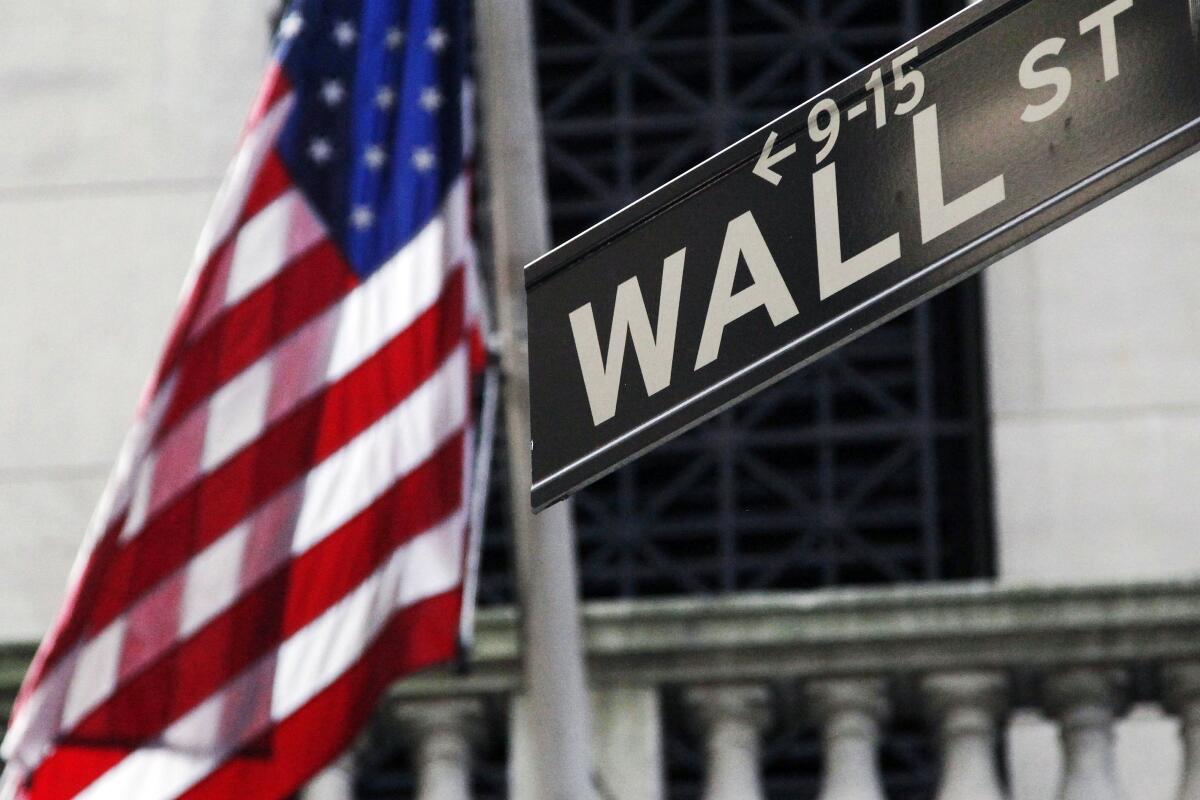Stocks end lower after a brief afternoon recovery fades

- Share via
Another day of choppy trading on Wall Street left stocks mostly lower, cutting into the major indexes’ gains for the week.
The Standard & Poor’s 500 index and the Dow Jones industrial average each lost about 0.2%, while the tech-heavy Nasdaq composite managed to eke out a gain of 0.1%. More stocks fell than rose in the S&P 500, and most of the benchmark index’s sectors took slight losses.
The market had edged higher in the early going after a surprisingly good retail sales report for August, but then quickly turned lower and remained there for much of the day. By late afternoon, major indexes had clawed back the ground they lost earlier and turned slightly higher, only to shed some of those gains in the final minutes of trading.
Markets have been choppy as investors shift money between various sectors while they parse any data coming out that could give more clues and signals on the potential direction of the economy and how the Federal Reserve will react.
Developers are proposing a visually stunning $500-million office tower on Sunset Boulevard in the heart of Hollywood called the Star.
The central bank will meet next week, and investors will listen closely for any comments about when and how much it will taper support for low interest rates that have helped fuel gains for stocks throughout the year.
The S&P 500 fell 6.95 points to 4,473.75. The index remains within 1.4% of the all-time high it set Sept. 2. The Dow dropped 63.07 points to 34,751.32, while the Nasdaq added 20.39 points to 15,181.92.
Small-company stocks also gave up some ground. The Russell 2000 index slipped 1.54 points, or 0.1%, to 2,232.91.
Investors were given another mixed bag of economic data to review as they try to gauge the economic recovery’s path ahead amid the COVID-19 pandemic, inflation and other factors.
The Commerce Department reported that retail sales rose 0.7% last month. Economists had expected a 0.85% contraction over concerns that people would have pulled back on spending as the highly contagious Delta variant of COVID-19 prompts consumers to curtail their shopping.
Consumers simply shifted spending to more online purchases and away from businesses that are still struggling to recover from the pandemic, including restaurants and other business that rely on in-person spending.
Wall Street also weighed a disappointing report showing that weekly unemployment claims rose more than expected.
Industrial, healthcare and raw materials companies were the biggest drag on the S&P 500. Deere & Co. fell 1.2%, Eli Lilly dropped 1.2% and Freeport-McMoRan slid 6.6%, the biggest drop among S&P 500 companies.
Losses for banks were tempered by rising bond yields that help them charge more lucrative interest on loans. The yield on the 10-year Treasury rose to 1.33% from 1.30% late Wednesday.
A mix of retailers gained ground following the retail sales report, which showed a surprise jump in August. Gap rose 1.6% and Bath & Body Works rose 2.1%.
More to Read
Inside the business of entertainment
The Wide Shot brings you news, analysis and insights on everything from streaming wars to production — and what it all means for the future.
You may occasionally receive promotional content from the Los Angeles Times.











